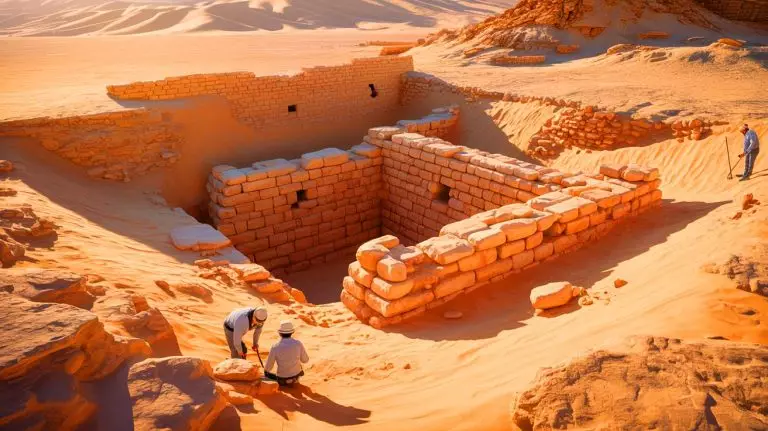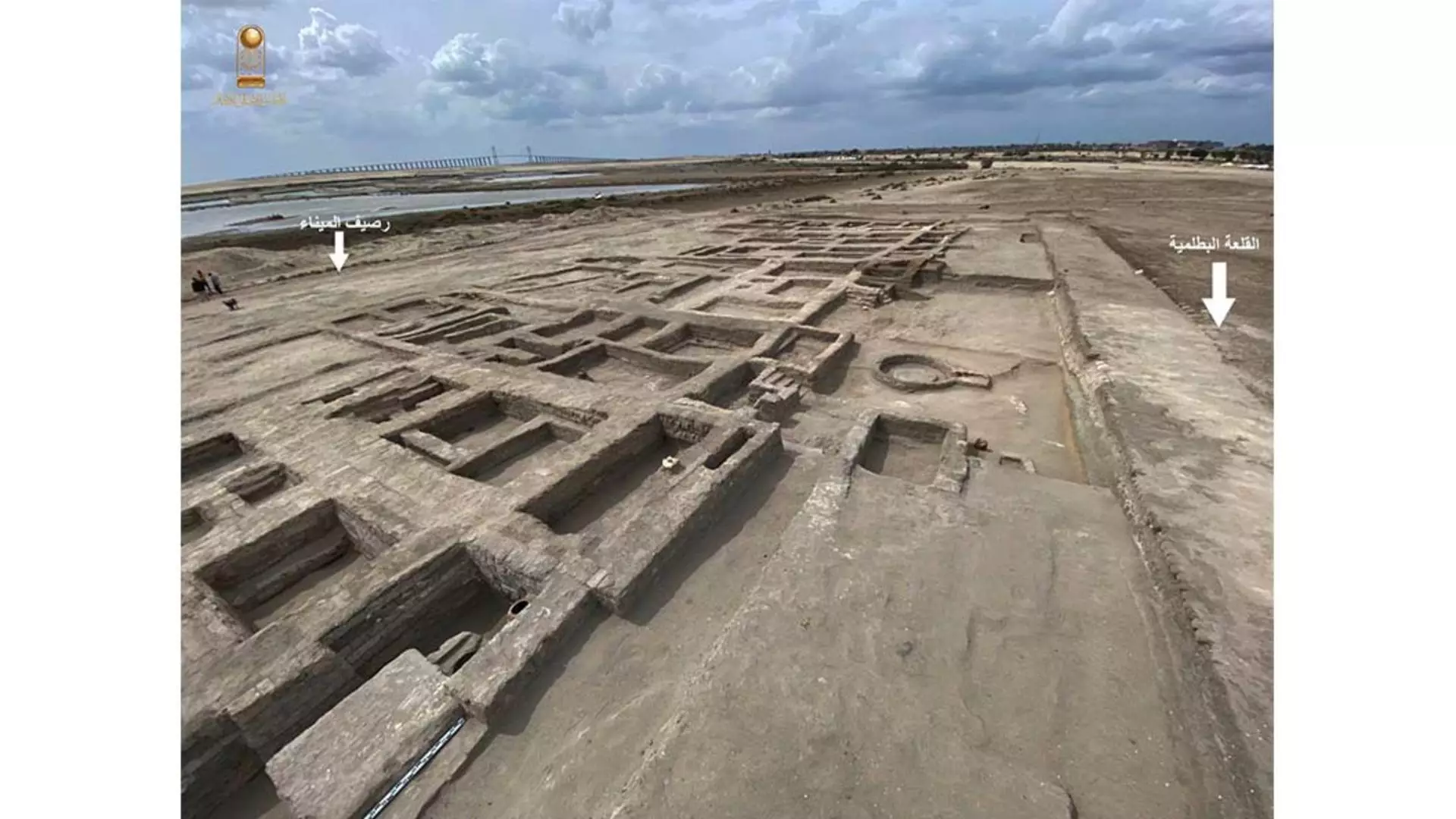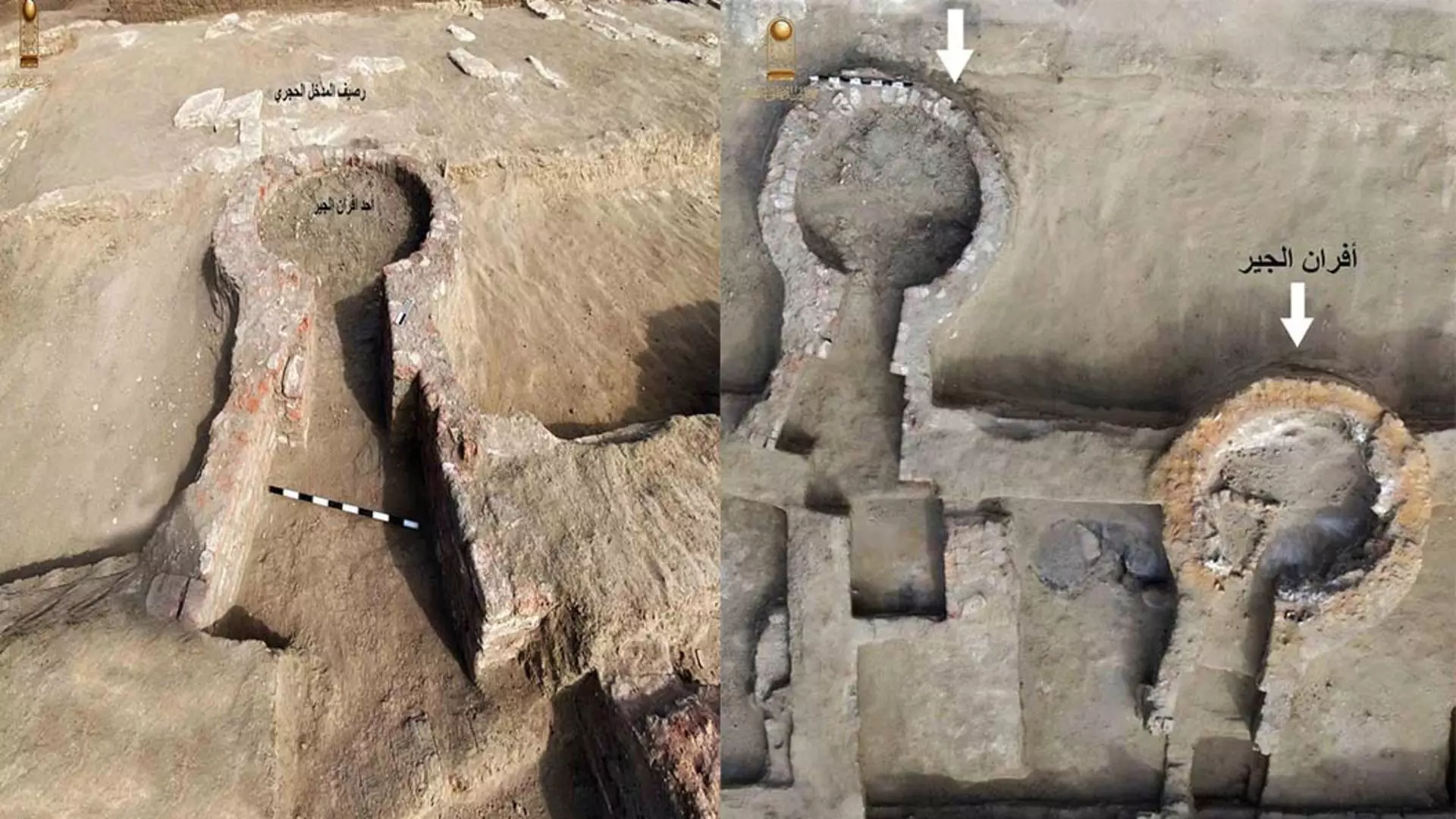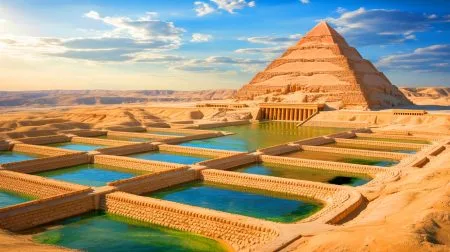| IN A NUTSHELL |
|
In the heart of the Sinai Desert lies a site of immense historical significance: Tell Abu Saifi. Known for its strategic importance during the Ptolemaic and Roman periods, recent excavations have shed new light on this ancient military fortress. Spearheaded by Egypt’s Supreme Council of Antiquities, these investigations have unearthed remarkable findings that provide insights into the military and industrial prowess of ancient Egypt. The discoveries at Tell Abu Saifi reveal a complex story of empire defense, industrial transition, and continuous occupation, emphasizing its significance as a crucial eastern gateway to the Egyptian empire.
The Eastern Front of the Egyptian Empire
Tell Abu Saifi’s historical significance is deeply rooted in its strategic position as a military stronghold. Recent excavations have uncovered evidence of a substantial structure dating back to a period prior to the Ptolemaic dynasty. This discovery suggests that the site served as a pivotal entry point into the empire long before its known historical timeline.
During the Ptolemaic era, beginning in 305 BCE, the site was commanded by Ptolemy I, a general under Alexander the Great. This period was marked by significant military activity, as the empire faced numerous threats from surrounding regions. The Roman conquest of Egypt in 30 BCE further underscored the site’s strategic importance, with the Romans taking control and reinforcing its defenses.
A remarkable find is a limestone-paved Roman road, which stretches over half a mile and connects the Roman fortress’s eastern gate to the central site. This road, constructed atop an older pathway from the Baltic era, highlights the continuous military occupation and adaptation of the site over centuries.
Ingenious Defensive Features
One of the most striking discoveries at Tell Abu Saifi is the ingenious defensive features that fortified the site. A trench, or moat, over 6.6 feet deep, encircled the fortress, designed to impede advancing enemies. This trench could be rendered inoperable, showcasing the strategic foresight of ancient military engineers.
Additionally, archaeologists have unearthed soldiers’ quarters that once housed entire families. These structures, built in layered patterns, demonstrate a long history of occupation that persisted into the Roman period. The presence of dried-up dockyards from the Ptolemaic era indicates that Tell Abu Saifi was also a center for naval activity, where boats were constructed and repaired.
Such findings reveal the extensive nature of the site and its role in defending the empire’s eastern front. Dr. Mohamed Ismail Khaled, Secretary General of the Supreme Council of Antiquities, emphasized the ingenuity behind these defensive designs, highlighting the strategic importance of Tell Abu Saifi in ancient times.
Tell Abu Saifi Became an Industrial Center
A significant transformation occurred at Tell Abu Saifi towards the end of the Roman era when the site transitioned into an industrial center. The discovery of four large lime kilns suggests the production of quicklime, which was crucial for construction and other industrial processes. This shift to industrial activity led to the destruction of existing stone structures, marking a new phase in the site’s history.
Egypt’s Minister of Tourism and Antiquities, Sherif Fathy, noted that these discoveries offer a deeper understanding of the defensive and industrial systems established in eastern Egypt. Tell Abu Saifi’s evolution from a military hub to an industrial center underscores its adaptability and enduring significance through various historical periods.
The industrial transition reflects broader economic and strategic changes within the empire, as resources were reallocated to meet new demands. This phase of Tell Abu Saifi’s history highlights its role in the broader narrative of Egypt’s development over the centuries.
Mapping the Gateway to the Empire
The recent archaeological efforts at Tell Abu Saifi have allowed experts to create a precise map of the Egyptian empire’s eastern gateway. Dr. Mohammed Ismail Khaled’s announcement of the discoveries of defense fortifications has been instrumental in piecing together the historical puzzle of this ancient site.
The mapping efforts have unveiled a distinctive architectural design, pointing to a well-established outpost that played a crucial role in the empire’s military strategy. The numerous trees lining the road to Tell Abu Saifi signify the empire’s solid presence and strategic interests in this region.
These findings not only enhance our understanding of the military history of ancient Egypt but also provide valuable insights into the empire’s broader geopolitical strategies. Tell Abu Saifi, with its rich tapestry of history, continues to offer new revelations about Egypt’s past and its enduring legacy.
As the sands of time continue to reveal their secrets, Tell Abu Saifi stands as a testament to the ingenuity and resilience of ancient civilizations. The site’s ongoing excavations promise to unlock further mysteries and deepen our appreciation for the complexities of Egyptian history. What other secrets might the sands of Tell Abu Saifi still hold, waiting to be discovered by future generations of archaeologists?
Did you like it? 4.4/5 (24)









Wow, didn’t expect ancient Egyptians to have such advanced military strategies! 🤯
How did they manage to keep the moat hidden for so long? Seems like an incredible discovery!
Thanks for sharing this fascinating piece of history! 😊
Are there any plans to make the site accessible to tourists in the future?
I love reading about ancient Egypt. These discoveries keep getting better!
The transformation from a military site to an industrial center is just mind-blowing. Talk about adaptability!
Can someone explain how a moat stays hidden for 2,000 years? Seems fishy! 🐟